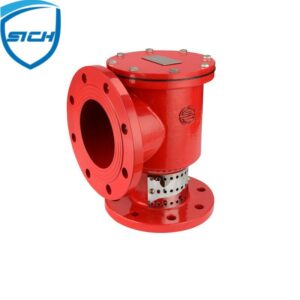A high-quality low expansion foam chamber is an essential firefighting equipment used to control and extinguish fires. It is designed to produce a low expansion foam that can be used to cover a large area and effectively smother the fire.
Here are some features and benefits of a high-quality low expansion foam chamber:
Superior performance: A high-quality low expansion foam chamber is designed to produce a consistent and reliable flow of foam to control and extinguish fires. It can effectively extinguish fires in large areas such as warehouses, aircraft hangars, and petrochemical plants.
Easy installation: The foam chamber can be easily installed in new or existing fire protection systems. It can be mounted in a horizontal or vertical position, depending on the application.
Durable construction: A high-quality low expansion foam chamber is constructed of high-quality materials such as stainless steel or brass, which are resistant to corrosion and wear. This ensures that the foam chamber can withstand harsh environments and last for many years.
Low maintenance: A well-designed low expansion foam chamber requires minimal maintenance, making it a cost-effective solution for fire protection. Regular inspections and testing can ensure that the foam chamber is functioning correctly.
Environmentally friendly: Low expansion foam is an environmentally friendly firefighting agent that does not harm the environment. It can be easily cleaned up with water and does not leave any residues.
Cost-effective: A high-quality low expansion foam chamber is a cost-effective solution for fire protection. It can be used in a variety of applications and can help to reduce property damage and downtime caused by fires.
Overall, a high-quality low expansion foam chamber is an essential firefighting equipment that can effectively control and extinguish fires in large areas. High quality low expansion foam chamber When choosing a foam chamber, it’s important to work with a reputable supplier who can provide quality products and installation services. Regular maintenance and testing can ensure that the foam chamber is functioning correctly and ready to use in case of a fire emergency.
The frequency of inspection and testing of a low expansion foam chamber should be determined by the manufacturer’s recommendations and local fire codes.
However, here are some general guidelines to follow:
Inspection: The foam chamber should be visually inspected on a regular basis to ensure that it is free of damage, corrosion, or wear and tear. Inspections should be performed at least once a year, and more frequently if the foam chamber is located in a harsh environment.
Functional testing: The foam chamber should be functionally tested on a regular basis to ensure that it is operating correctly. The frequency of functional testing depends on the manufacturer’s recommendations, but it is typically recommended to test the foam chamber once a year.
Maintenance: The foam chamber should be maintained regularly to ensure that it is in good working condition. Maintenance tasks include cleaning the foam chamber, checking the foam concentrate level, and verifying that all components are functioning correctly.
It’s important to note that the frequency of inspection and testing may vary depending on the specific application and local fire codes. It’s recommended to consult with a fire protection expert or the manufacturer of the foam chamber to determine the appropriate inspection and testing schedule for your specific needs. By following the recommended inspection and testing schedule, you can ensure that the foam chamber is functioning correctly and ready to use in case of a fire emergency.
